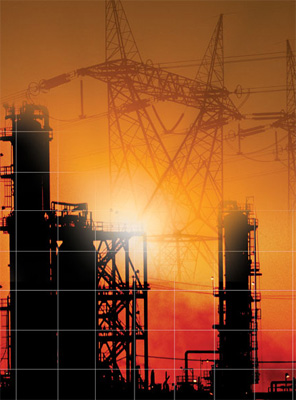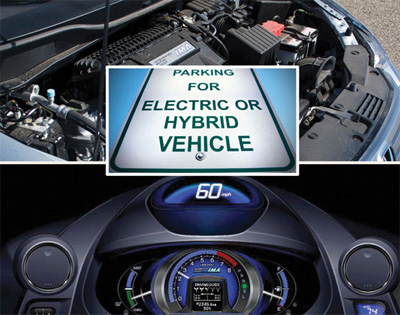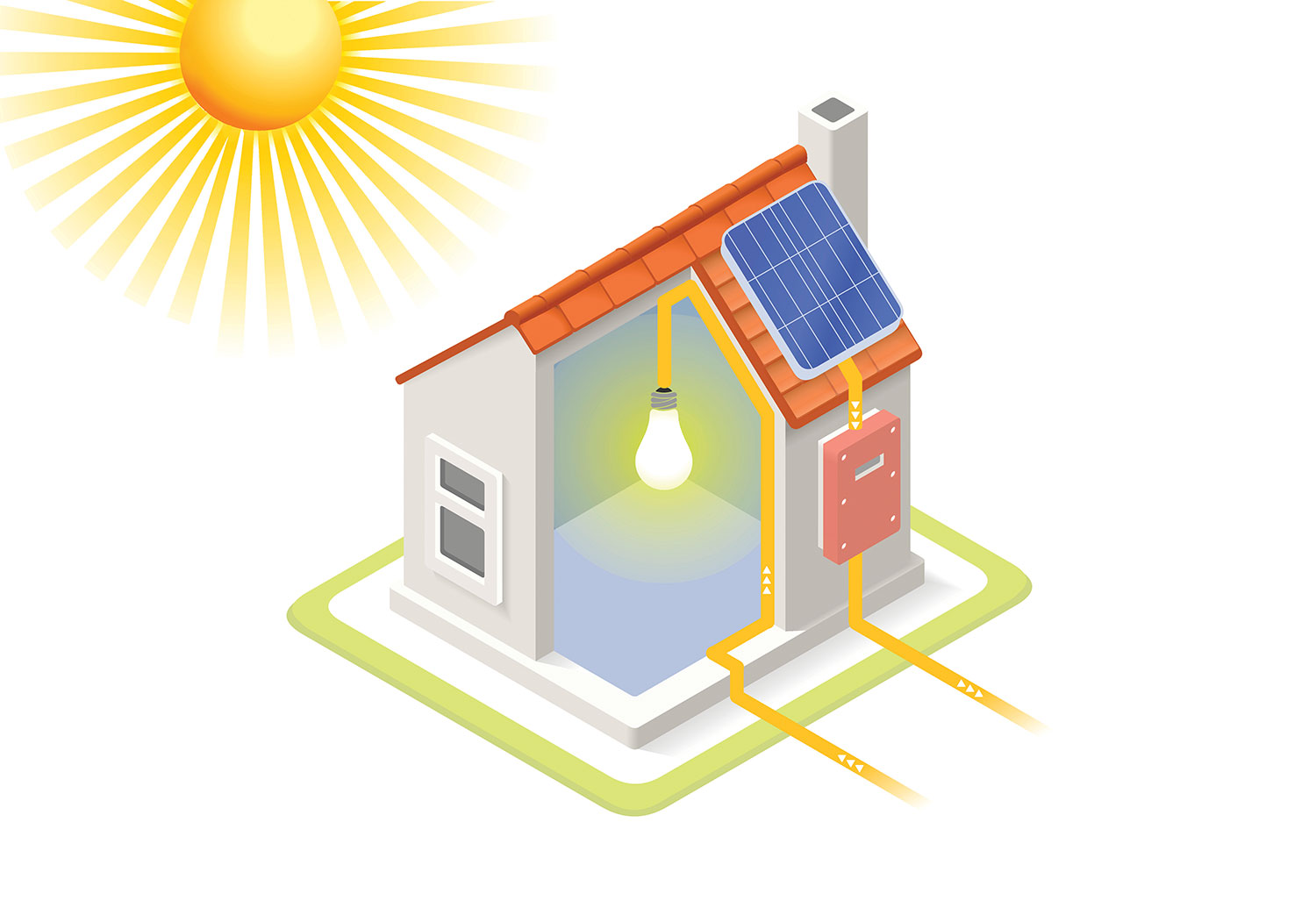 The world is changing rapidly and becoming more dependent than ever on expanded use of alternative energy systems and reducing and preserving grid-produced energy. The electrical infrastructure in the United States is one of the best in the world, but is aging and, to some degree, becoming more vulnerable to the effects of aging and loading. Society is typically not removing loads from the electrical grid, but is adding load.
The world is changing rapidly and becoming more dependent than ever on expanded use of alternative energy systems and reducing and preserving grid-produced energy. The electrical infrastructure in the United States is one of the best in the world, but is aging and, to some degree, becoming more vulnerable to the effects of aging and loading. Society is typically not removing loads from the electrical grid, but is adding load.
Alternative energy technologies such as electric vehicles, solar and wind power sources are providing society with the means to reduce load on the electrical grid and take advantage of natural resources for power production. These technologies are fast to evolve and become attractive and affordable to consumers and even mandatory to a degree, in some cases, to address energy code requirements. As more of these technologies are included in premises electrical systems, necessary safety requirements must be applied.
Whatever technology, new or old, is employed it must be a safe. There is significant responsibility to society to provide safe and dependable electrical power. Technology that is dynamic and evolving is exciting but also means there are necessary implications for the National Electrical Code®.
Reactive or Proactive Change
NEC® changes have historically been reactive to industry progress and incorporated revisions based on identified needs, statistics, and other justification. In recent years, NFPA’s NEC® technical committees have become much more proactive relative to incorporating revisions and new rules in the Code, and for good reason. Technology is advancing in many areas often faster than codes and standards can be developed.
The 2014 NEC® development process is underway with approximately 3745 proposals submitted. The stage is set for the technical subcommittees to act on these proposed changes in 2012, several of which are proactive and progressive and address new and evolving technology.
It is imperative that any applicable codes and standards for the built environment not be viewed as obstructions or roadblocks to progress, but rather as an essential component of our electrical safety system. The electrical codes must advance and evolve so they can be applied to all the great technologies. Some areas in the electrical industry that are evolving are solar photovoltaic systems, electric vehicles, wind generated power, energy storage, and DC wiring and systems. Another activity that is driving change in the NEC® is energy management. Let’s take a closer look some of the areas where the NEC® is experiencing changes and expansion to address alternative energy technology.
Energy Management
As aggressive initiatives to address energy use and loading of the current electrical grid, the codes and standards development communities work to align their documents to address identified safety concerns. This is apparent for product safety standards and electrical installation codes, and specifically theNEC®. More often energy codes are incorporating performance requirements that address reduction of energy use in buildings and premises wiring systems. It is important that these energy codes continue to provide the performance requirements that drive the installation requirements that are included in the NEC®. As the smart electric grid initiatives and timelines become clear to utilities and consumers, the related work and installations will be necessary. This work will happen on both sides of the service point, meaning it will include work on utility grids and premises wiring systems. Energy management systems are becoming more common as smart metering is employed and consumers become aware of their energy use and how they can reduce it.
The NEC® technical committees have been active, through the work of another specifically assigned Smart Grid task group, which included representatives from IAEI, NFPA, NIST, EEI, BICSI, NESC, NEMA* and others. The work of this group resulted in the development of a new proposed NEC® Article 750 titled Energy Management Systems. See NFPA 70 2012 ROP Proposal 13-180 for complete information. The Code must address which loads on the premises can be controlled and those which cannot be controlled by energy management systems.
It is also important as energy codes include specific energy reduction performance for buildings that they be able to refer to the installation rules in the NEC®, rather than developing installation rules in those other codes. Once again, the NEC® technical committees responded proactively to be sure the NEC® remains as an integral part of smart grid initiatives on the customer side of the service point. Interoperability will be necessary to implement an effective and “smart” grid system. It is becoming more a reality that one method of demand response will be through expanded use of energy storage systems. This is anticipated in large utility scale battery systems and battery systems installed in buildings. The NEC® must include rules that can be applied to these energy storage systems.
AC or DC Power

Photo 1. Increasing quantities of electric vehicles will require a capable charging infrastructure.
The Tesla and Edison debate and questions continue. It seems apparent that the use of more direct current (DC) systems and wiring is in store for the built environment. DC systems are starting to become more attractive in building wiring systems for other than just data centers and backup power systems. Currently, energy is necessary to convert AC power to DC for electronic and other types of utilization equipment. Part of reducing energy could include eliminating DC power supplies where possible. Many electrical appliances and electronic equipment such as home computers, flat screen TVs, game boxes, audio equipment and so forth operate on DC power and have a built-in DC power supply to convert the AC power to DC. This takes energy. Imagine if the DC were supplied directly to this utilization equipment.
This concept is real and technology is driving reality. The next edition of the NEC® is being revised and expanded to include appropriate rules that can be applied to DC wiring. DC power will become more popular for normal lighting and power systems in buildings and will be an important part of expanded demand response capabilities when connected to power storage (batteries) systems installed on the premises.
New technologies have been manufactured that drive the need for not only NEC® rules but development of applicable product safety standards. Light-emitting diode (LED) technology has advanced to an attractive energy alternative that provides energy savings and quality light. This edition of theCodeincludes proposed requirements for listed retrofit kits for luminaires and signs. A new definition of the term retrofit kit has also been proposed in Article 100. A new Article 710 titled Direct Current Microgrids was proposed; however, it was rejected in the proposal stages of the process.
A new Article 393 (proposed as 302) titled Low-Voltage Suspended Ceiling Power Distribution Systems provides requirements for a ceiling grid system that would provide power for lighting and other loads. See NFPA 70 2012 ROP Proposal 18-10a for complete information.
Electric Vehicles
One of the more popular alternative energy initiatives has been the resurgence of electric vehicles as an alternative to combustion engine vehicles. The vehicles are here, and they will need charging stations, both at the home and in the commercial setting. Nearly every vehicle manufacturer has joined in this long-range effort. Even though many of the new EVs are smaller and compact, the technology will no doubt evolve to a point where the larger vehicles many are accustomed to will be available in electric versions. This industry is progressing at a fast pace. Saving the environment from vehicle exhaust is a huge effort and one the current administration has placed significant emphasis on and, consequently, has set aggressive goals.
The growth of the electric vehicle market brings a need for building a sufficient and safe charging infrastructure, a great opportunity for the electrical industry. With these opportunities come the challenges of adding the vehicle charging loads to existing wiring services and the utility grid. At the same time, managing the loads on the existing electric grid and the smart grid activity grows. No easy task and this will require deliberate communication and coordination between the utilities and consumers.
Recognizing this fast approaching need, the NEC® development community responded by assigning a specific task group with the responsibility of addressing identified needs inNEC® Article 625. This article was added to theCodein the mid-1990s and was a great example of a successful proactive approach taken by NFPA in ensuring that the Code was ready for this technology. At that time, the NEC® was ready for electric vehicle market growth, but the automobile industry and the technology still had to evolve to where it is today.
This cycle, an assigned task group has once again readied NEC® Article 625 by proactively addressing requirements for individual branch circuits, clarifying provisions for cord-and-plug connected electric vehicle supply equipment (EVSE), and including the option of automatic load management systems where existing service or source capacity is insufficient for the added charging load. Article 625 was also reorganized to provide a more logical sequence and to address usability issues. Once again, the NEC® technical committees have responded proactively to ensure that the NEC® is equipped and addresses safety requirements necessary for the safe and successful growth of the electric vehicle charging infrastructure.
The Importance of Code Adoption
Adopting the latest edition of the NEC® is just plain smart, especially in this time of fast-paced technological development. Many jurisdictions have long recognized that the electrical industry advances each year at a pace that is faster than required codes can be written.
Delaying adoption of the latest NEC® requirements for even one cycle creates challenges for jurisdictions that are required to approve technologies that may not be fully addressed in previous Code editions. Not applying the requirements in the latest edition of the NEC® also means that consumers may not have the latest required protection in their electrical systems. The cost of doing business has to include safety for persons and property. Those jurisdictions adopting the latest edition can rest assured that the NEC® will adequately address the electrical technologies that authorities having jurisdiction must routinely inspect and approve.
Summary
While this article did not address all of the proposed Code revisions for this cycle, some of the significant implications related to alternative energy technologies have been provided. The NEC® development process is dynamic and has evolved over the years to become progressive and proactive whenever possible, as compared to being reactive. It is evident that the NEC® development process is serving the electrical industry well and in timely manner.
The work of the NEC® technical committees is extensive this cycle and involves many organizations sharing common safety objectives. There have been vast achievements in the electrical industry in the last couple of decades and moving ahead it is obvious that the pace of change will increase.
The electrical safety system depends heavily on codes and standards that adequately address all safety concerns for persons and property. It is a tremendous responsibility shared by many industry stakeholders. TheNEC® development process is evolving to not only react but also anticipate and respond accordingly.
For complete information on the changes proposed for the next NEC® edition refer to the NFPA 70 2012 Report on Proposals available from the National Fire Protection Association.
References *
NFPA, National Fire Protection Association
NIST, National Institute of Standards and Technology
EEI, Edison Electrical Institute
BICSI, a professional association supporting the information technology systems (ITS) industry
NESC, National Electrical Safety Code
NEMA, National Electrical Manufacturing Association














Find Us on Socials